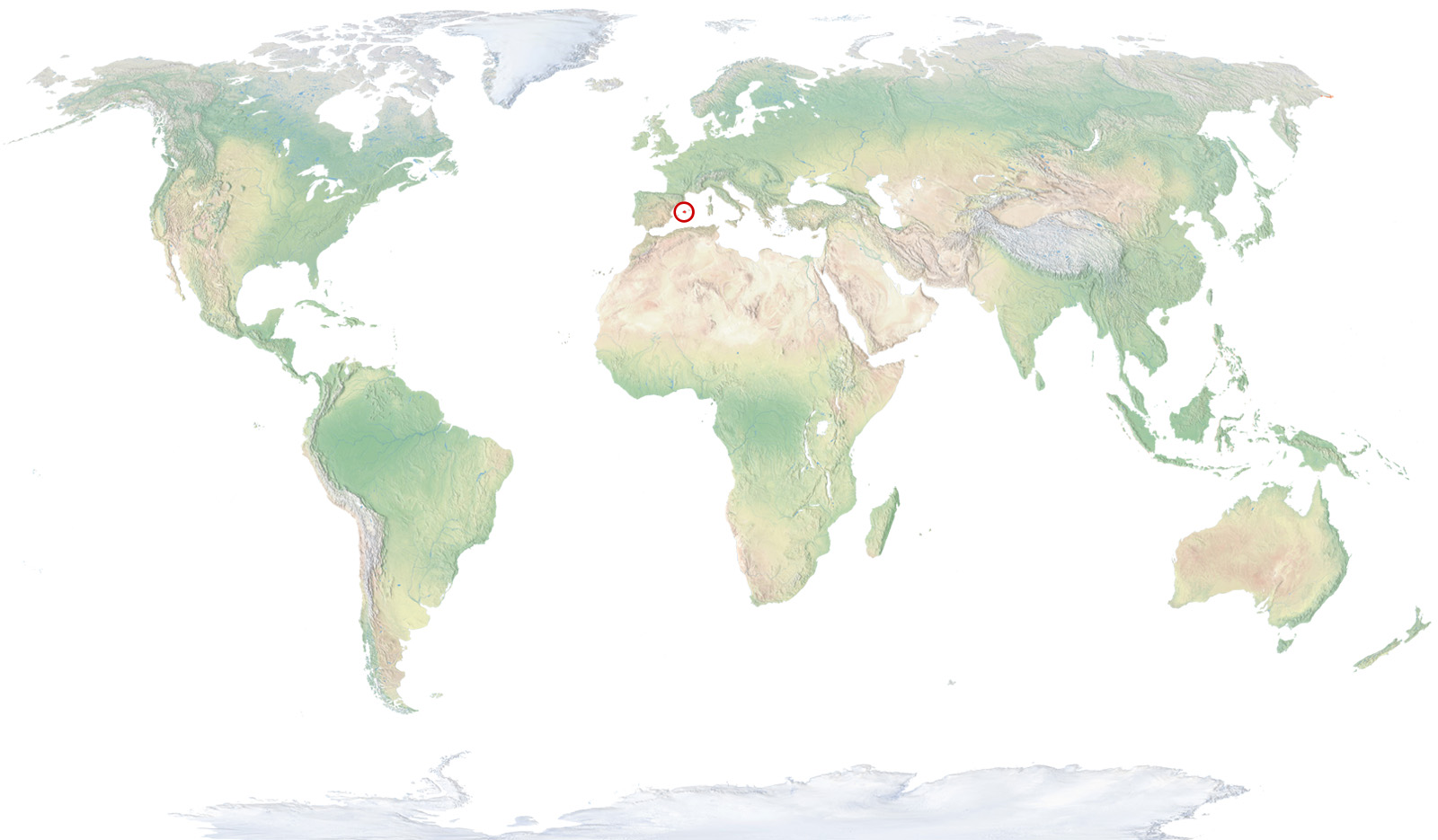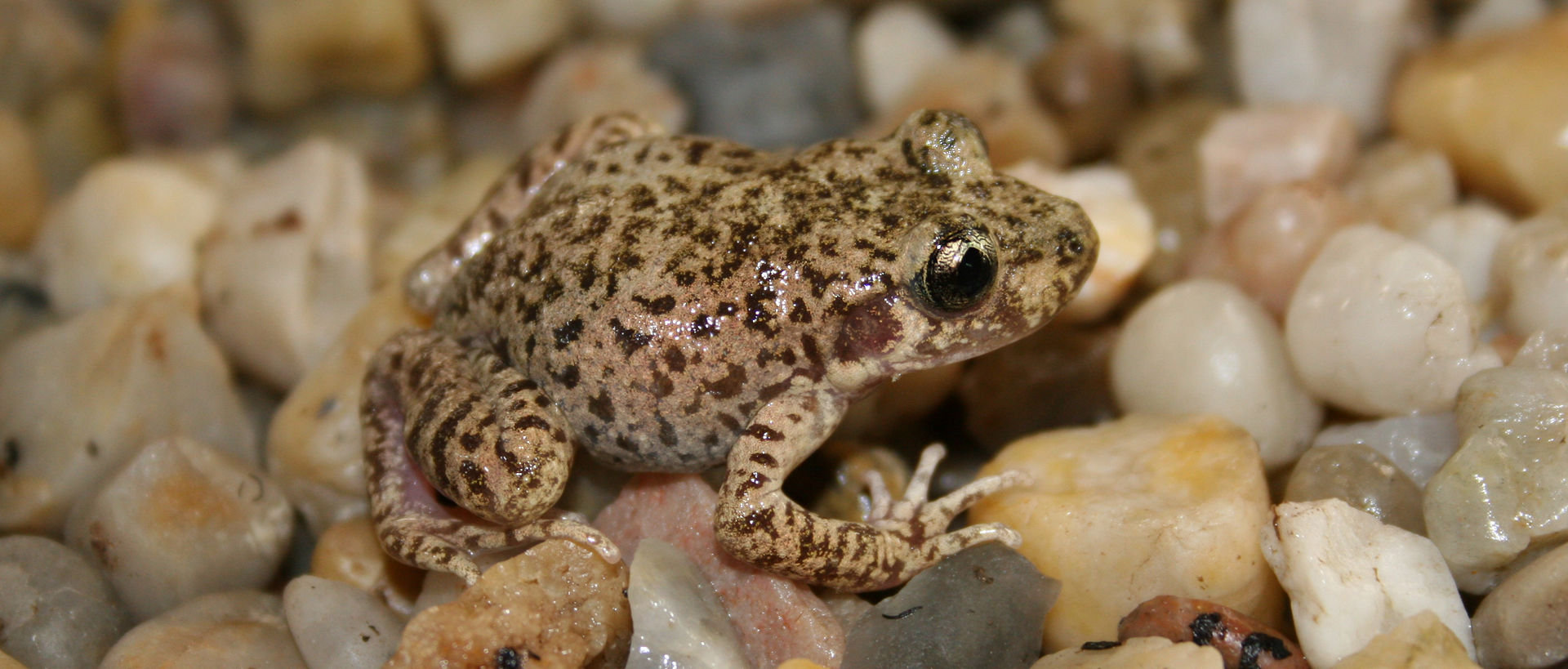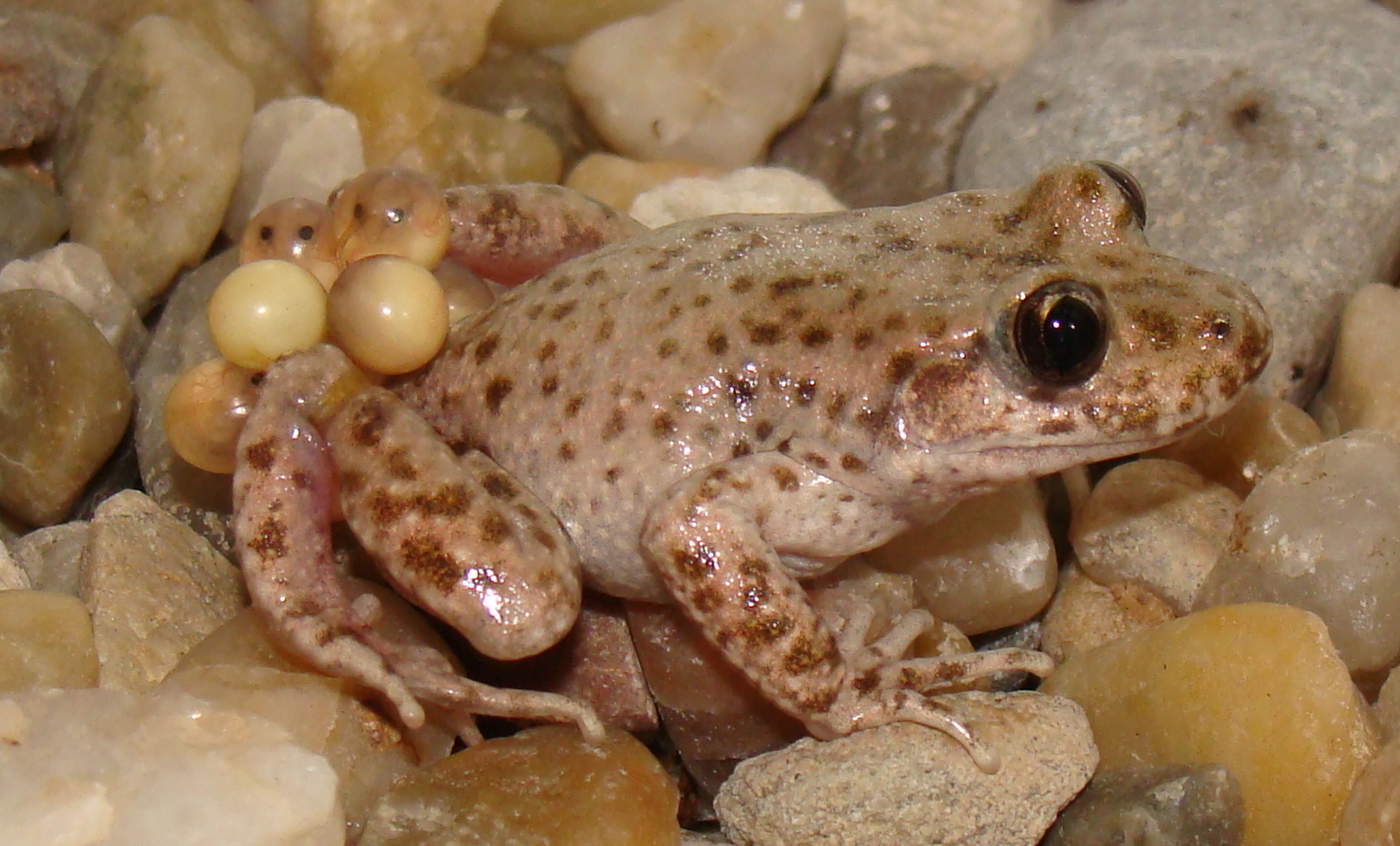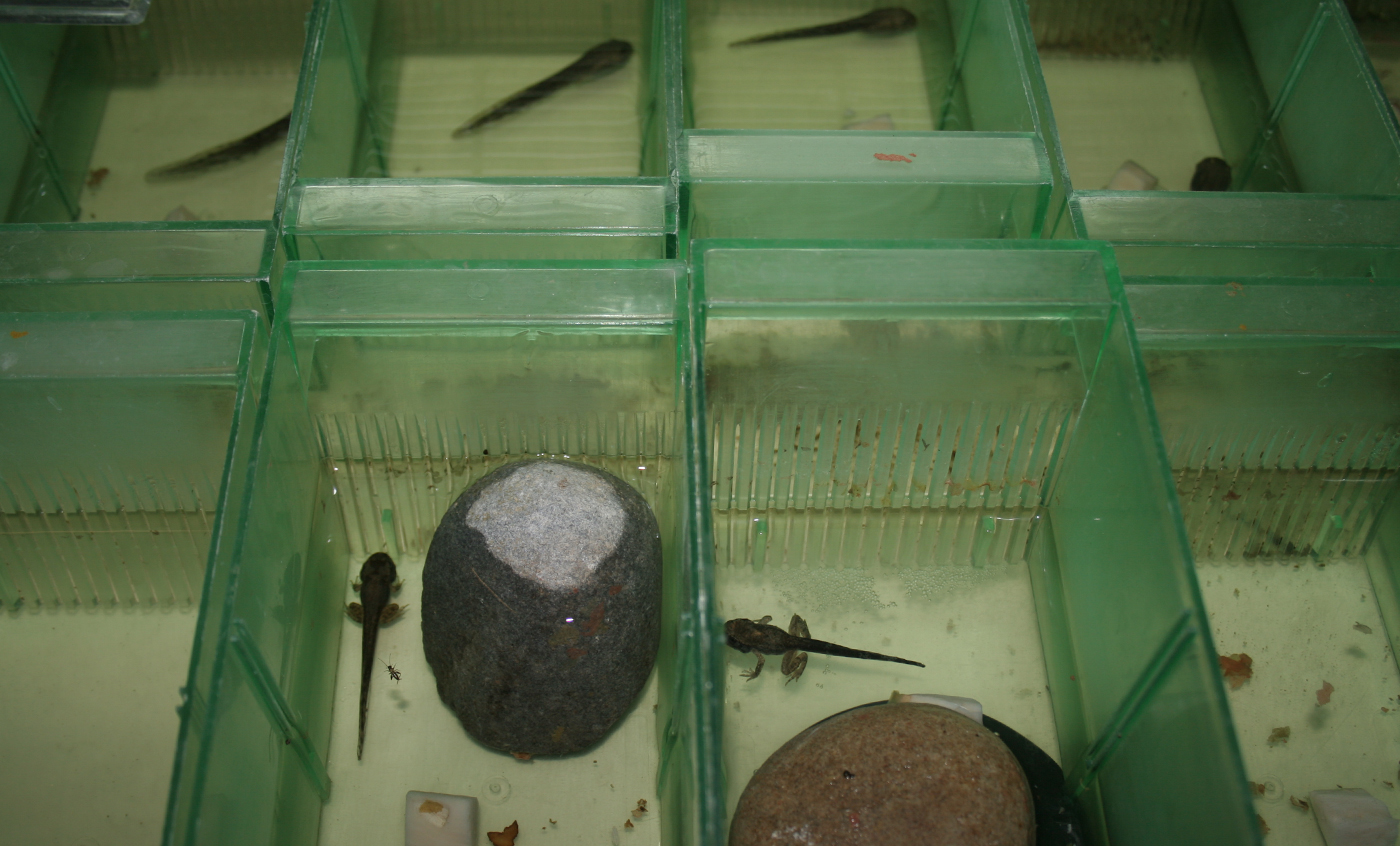Mallorca midwife toad
The Majorcan midwife toad was discovered in fossil state on 1977, and three years later living specimens were found in the island of Majorca. This small toad only lives in the mountain rivers of the Tramuntana mountain range, in the northern part of the island.
Belonging to the Alytes genus (midwife toads), they have their own reproductive peculiarities, among which, the fact that males carry the females’ eggs on their backs for all the maturation period, while keeping them wet.
Natural habit
This small toad only lives in the karst mountain rivers of the Tramuntana mountain range, in the northern part of the island.

- Distribution / Resident
- Breeding
- Wintering
- Subspecies
Risk level
- Extint
- Extint in the wild
- Critically endangered
- In Danger
- Vulnerable
- Near threatened
- Minor concern
- Insufficient data
- Not evaluated
Taxonomy
Physical characteristics
Biology
Reproduction
Biology
It is one of the world’s smallest toads, as its maximum size is 4 cm.
Its skin has a great variety of colours, from brownish to yellowish and greenish, with several irregular dark spots distributed along its body. It can be distinguished by its big dark eyes that show its nocturnal habits, and by its long limbs that help it climb to rocks.
This small toad only lives in the karst mountain rivers of the Tramuntana mountain range, in the northern part of the island.
Insectivore.
Belonging to the Alytes genus (midwife toads), they have their own reproductive peculiarities, among which, the fact that males carry the females’ eggs on their backs for all the maturation period, while keeping them wet. Once the eggs are about to hatch, the male submerges into water, so tadpoles can be set free. However, even in this aspect, the Majorcan midwife toad shows its peculiarities, as the number of laid eggs, from seven to twelve, is much smaller than in other midwife toads, and their size is almost as twice as much.
The mountain streams of Majorca, although seasonal in flow and tending to remain dry in the summer, do leave small ponds and puddles in gorges that never dry up. And this is where the tadpoles of the Majorcan midwife toad, one of the largest tadpoles in Europe, grow and undergo metamorphosis.
The Majorcan midwife toads have long rear legs that enables them to climb, which has let them survive in such a harsh environment. This ability is very rare among similar continental amphibians, who are eminently burrowers. This is interpreted as an adaptation to the rough, limestone environment of the island.
The Majorcan midwife toad was discovered in fossil state on 1977, and three years later living specimens were found in the island of Majorca. These cliffs between steep walls are its last refuge, as the inaccessibility of this desolate mountain has been a shelter for this species against predators. Its main predator is the viperine snake (Natrix Maura) and is also the main factor limiting these toads’ populations, as this water snake occupies the lower parts of the same streams where these toads live, which prevents its occurrence in these areas.
The Romans are believed to have introduced a wide range of continental species on Majorca, including the genet (Genetta genetta), the European pine marten (Martes martes), the least weasel (Mustela nivalis), the false smooth snake (Macroprotodon cucullatus), the aforementioned viperine snake and the common frog (Rana perezi). The presence of all these species has contributed to an almost complete extinction of the animals endemic to the Balearic Islands, among which there is the Majorcan midwife toad. Majorcan midwife toads used to live in the whole island, as proved by the large number of fossils found. However, nowadays they only survive in areas where these new predators cannot access, such as the steepest mountain stream areas of the Tramuntana’s mountain range.
Nowadays, the main threats to these toads are, besides the aforementioned introduction of predators in their habitat, the growing pressure on island water resources to meet human consumption needs, the increased human presence as a result of the increase of rural tourism, the presence of avid collectors attempting to catch them (an illegal activity) and the worrisome and recently-discovered existence of pollution, coming from bottling plants.
Years ago, the Balearic government signed an agreement with the Zoo of Barcelona to breed these toads in captivity, in order to reintroduce them later to Majorca, which has proved to be quite successful. In recent years, more than a thousand toads born at the Zoo's facilities have been released into their natural habitat on the Serra of Tramuntana.





